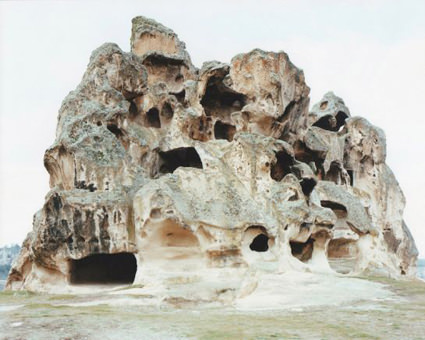DOMINGO MILELLA
2013-01-07Over the last ten years, Milella’s subjects have been cities and their borders, cemeteries and villages, caves and homes, tombs and hieroglyphs – in short, signs of man’s presence on earth. His interest lies in the overlap between civilization and nature and how landscape and architecture are invested with individual and collective memory.
In the ancient Turkish city, Myra, Milella has photographed the spectacular tombs that are carved into stone cliffs, as if they are part of the mountain. The carved facades appear almost like a cluster of homes, the design reflecting how the wooden houses of the period would have looked. In another image, Milella has photographed a sanctuary in Phrygia, a lime stone formation filled with ancient holes, shaped by both natural and human interaction. A place of refuge, of spiritual purpose and sacrifice, the sanctuary encapsulates Milella’s enquiry into an identity which is simultaneously archaic and contemporary.
The fallen ruins of the Greco-Roman theatre of Termessos stand at 1600m above sea level and almost appears to be part of and contained by the Taurus mountains that surround them. They have endured over two thousand years of elemental weathering, frozen in time on the day the city was abandoned. The idea of durability and the passage of time on language and culture are also present in the image of the cemetery at Van, a city on the border between Turkey and Iran. Muslim graves stand in a snowy field. Their height and dark, monolithic presence make them appear like the skyline of a modern city. Inscribed with Selgiuchid writings, the graves are an architectural model of time, of memory and of survival.
Opposite – Phrygian Sanctuary, Turkey, 2012
Exhibition runs through till January 26th, 2013
Brancolini Grimaldi
43 – 44 Albemarle Street
First floor
London
W1S 4JJ
